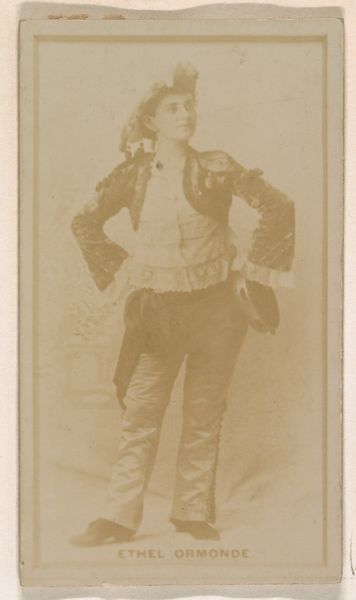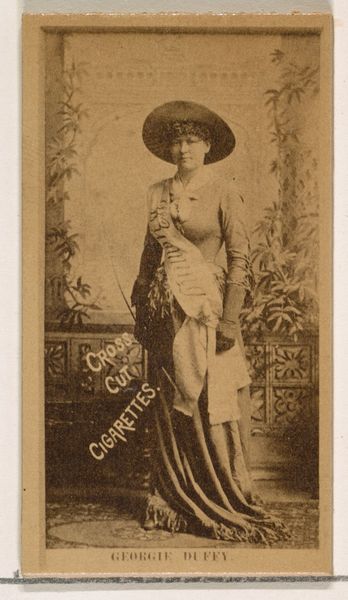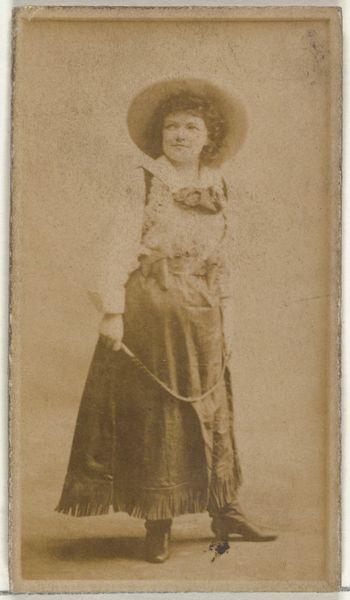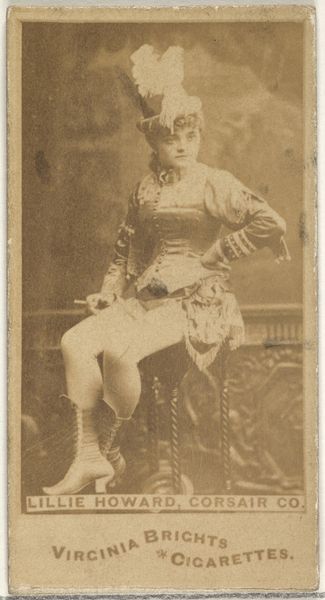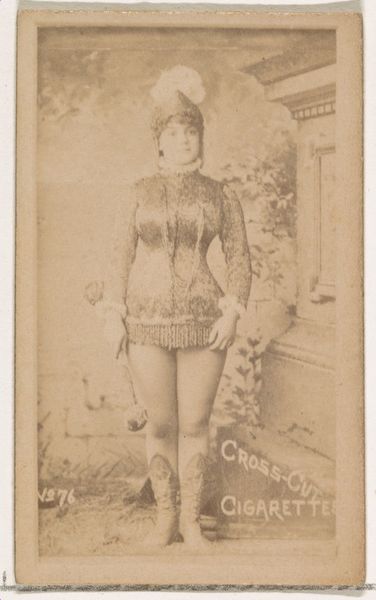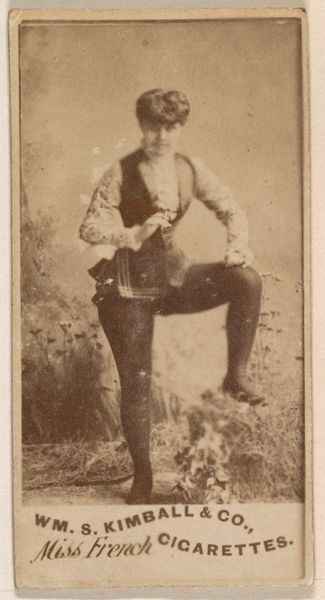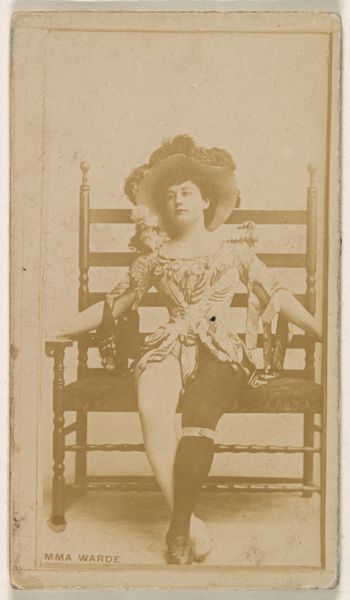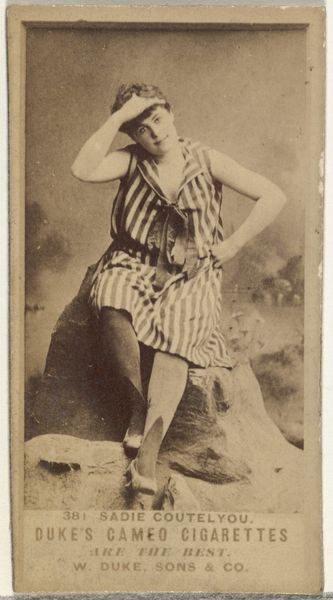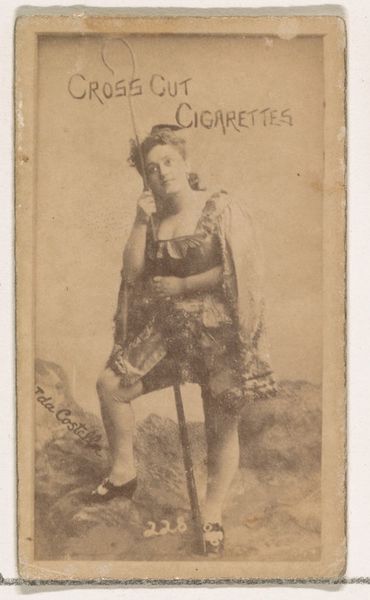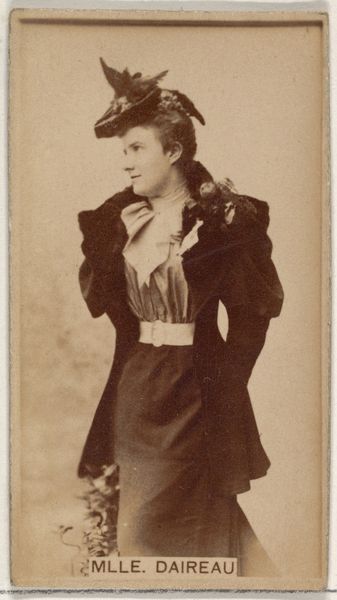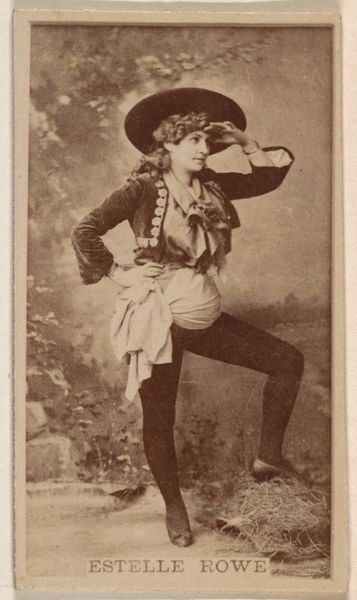
Card Number 30, Miss Everson, from the Actors and Actresses series (N145-2) issued by Duke Sons & Co. to promote Cross Cut Cigarettes 1880s
0:00
0:00
print, photography
#
portrait
# print
#
photography
Dimensions: Sheet: 2 5/8 × 1 7/16 in. (6.6 × 3.7 cm)
Copyright: Public Domain
Editor: This is Card Number 30, "Miss Everson," from the Actors and Actresses series, an 1880s print by W. Duke, Sons & Co., created to promote Cross Cut Cigarettes. It feels so staged, yet its origins are so linked to consumption. How do you read a piece like this, positioned between art and advertising? Curator: I see a direct connection to the means of production, specifically in how photography was used to mass produce these images for consumer culture. Notice the pose, the theatrical costuming. It wasn’t just about selling cigarettes; it was about selling an image, a lifestyle. Do you think that this challenges the traditional boundaries of "high art"? Editor: Absolutely, it's almost mocking those boundaries. Was photography considered high art then, though? Or was it mainly a commercial endeavor? Curator: Exactly, that tension is key! Photography was gaining traction, but these cards democratized portraiture while simultaneously fueling consumption. Consider the labor involved in the tobacco fields, the factories printing these cards, the distribution networks… It speaks volumes about the economic realities of the time. How do you think Miss Everson factors into all of this? Editor: She is reduced to being another commodity. An image, yes, but a body nonetheless, used to sell a product. Curator: Precisely. This reinforces how art and commerce were intertwined, how both shape and reflect social values and material conditions. It shows how "art" isn't created in a vacuum but emerges from specific socio-economic contexts. Editor: I guess I never really considered all those levels within such a seemingly simple image. It's more than just a pretty picture on a cigarette card. Curator: Agreed, it's a multi-layered artifact, exposing the machinery of desire and production that underpins both art and commerce.
Comments
No comments
Be the first to comment and join the conversation on the ultimate creative platform.


